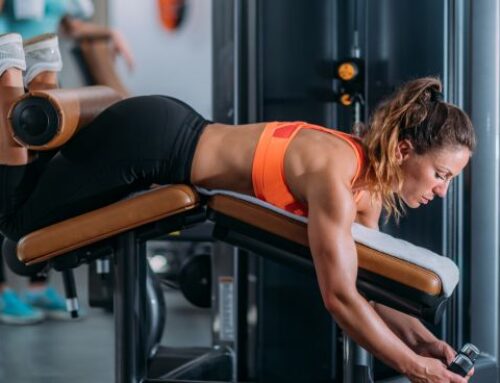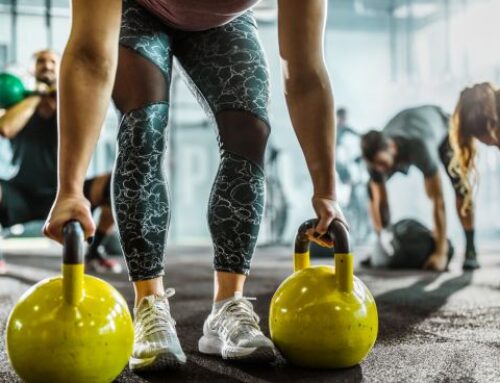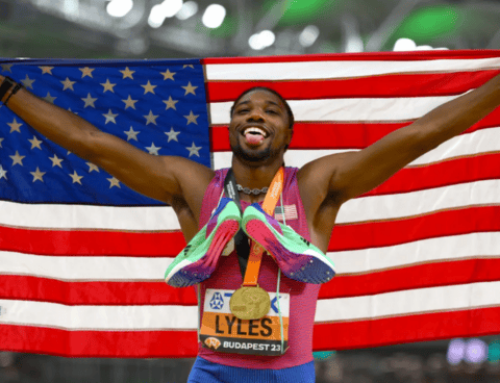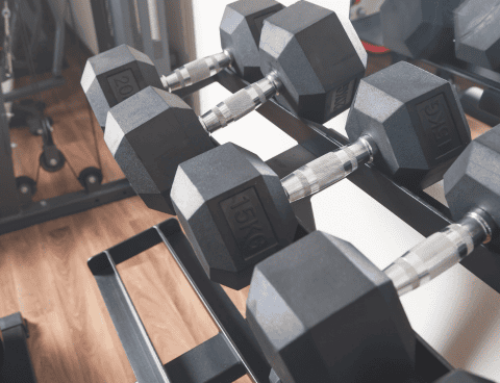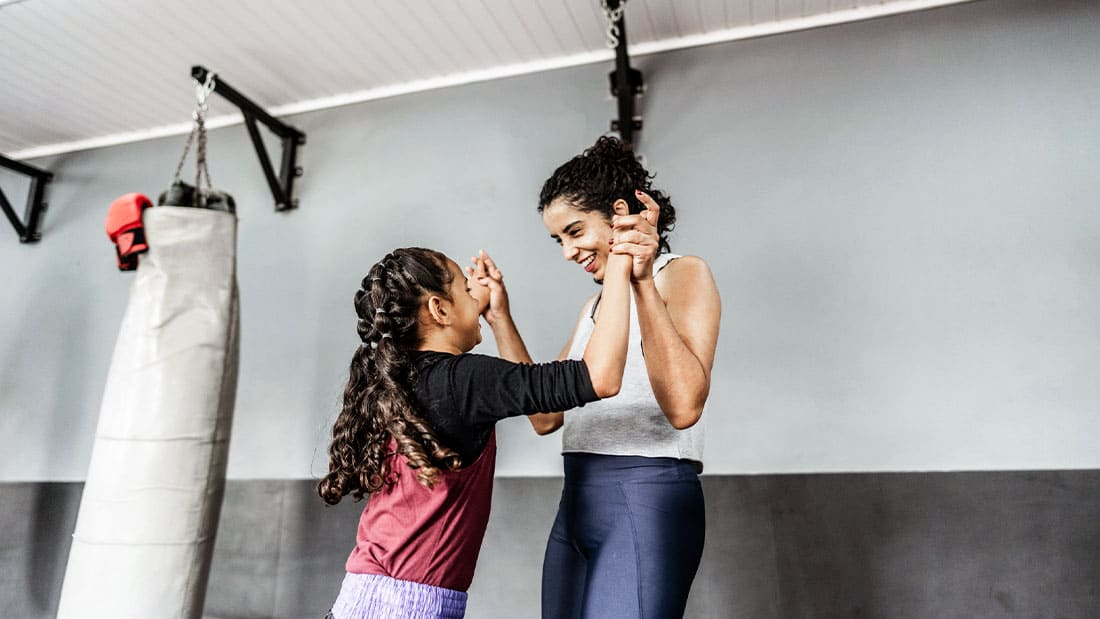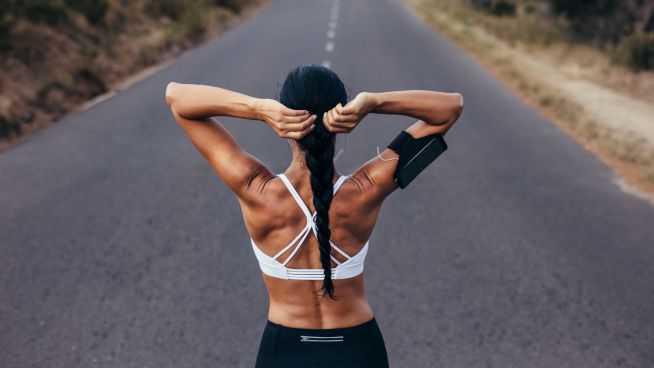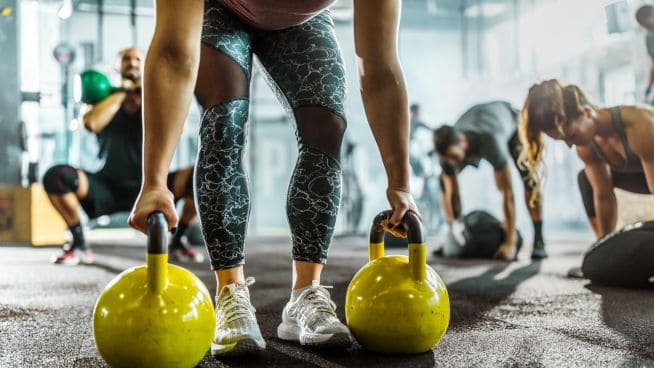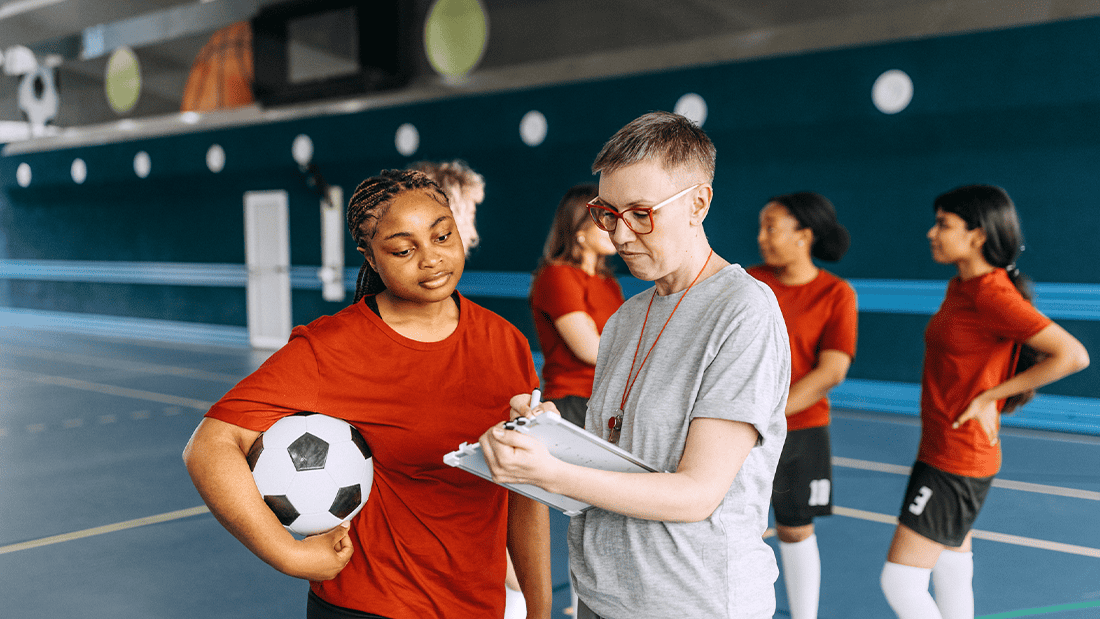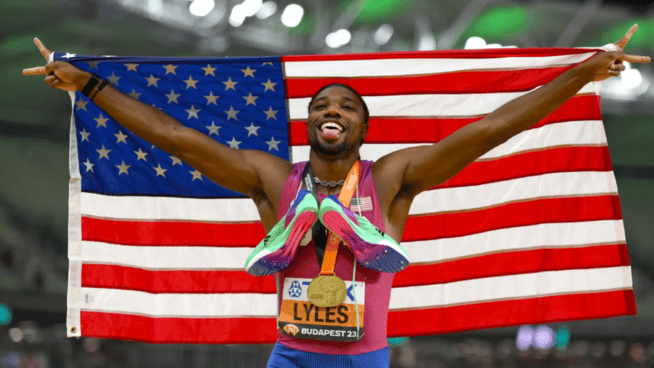Why You Should Train Knees Over Toes
“Don’t let your knees go past your toes.”
It’s one cue I hear quite often from personal trainers.
Lots of trainers believe a person’s knees extending beyond their toes during resistance training is a huge no-no.
I see this frequently when trainers are taking a client or athlete through a squat progression. They’ll be adamant about them maintaining a vertical shin angle and sitting back on their heels. Just think about it: what are some of the most common cues you hear for a Squat?
“SIT BACK ON YOUR HEELS!”
“HIPS BACK… HIPS BAAAAAACK”
Sound familiar?
A quick disclaimer: I am not against a hip-dominant Squat. Hip-dominant/powerlifting-style Squats are relevant and applicable to specific training goals and circumstances. This article is not against this type of squatting.
However, I believe a large amount of strength coaches, personal trainers and fitness professionals get this simple fact twisted: Your knees extending past your toes is not a bad thing!
In fact, I believe the healthiest form of squatting takes the knee beyond the toe. This also applies to Lunges, Step-Ups and Split Squats as well.
I believe a “knees over toes” method is superior to the vertical shin method for these movements when it comes to long-term health and wellness. Here’s why.
What is a ‘Vertical Shin’ Squat?
The vertical shin Squat, or a “powerlifting-style” Squat, is completed with a wide stance, forward torso and a large hip hinge.
Where did this style of squatting come from?
In powerlifting, the athlete who wins the competition is the one who lifts the most weight. The best strategy to do this is to create the most leverage in the smallest range of motion. This is why the most successful powerlifters tend to be short.
During the Squat in powerlifting, the universal criteria for a qualified lift is to reach “90 degrees” of hip flexion. If I’m a powerlifter, and 90 degrees is the minimum requirement, and I must lift the most weight to win, why the heck would I go past 90 degrees? I wouldn’t!
Powerlifting is where the “squat to parallel and stop” criteria originated from. It has leaked into weight rooms all over the world, including the training of other sport athletes and even general health and wellness clients.
For powerlifting, this style of squatting makes the most sense.
It gives the athletes the greatest chance to accomplish what their sport demands of them.
For general health and wellness, and even athletic performance, I believe there is a better option.
Why I Believe In Knees Over Toes
I know, I know.
Your first excuse is going to be that you have “bad knees.”
I am here to enlighten you that most “bad knees” don’t occur the same way a bad batch of cookies does.
Knee pain is accumulated from years and years of wear, tear and bad training (or lack of training altogether). One thing we must understand about the knee is that it is at the mercy of the hip and the ankle. Our bodies are smart and will compensate for just about anything. When there are issues at the hip and ankle, the symptoms are often displayed at the knee.
For example, if you are walking in extreme internal rotation of the hip (think pigeon-toed), knee pain is more likely to develop. Your knees aren’t just “bad.” They are more than likely unstable and at the mercy of bad biomechanics from everyday life.
Also, if surrounding musculature like the quads and hamstrings is weak, it is not going to be able to handle the stressors of your life; even something as simple as taking the stairs can feel like torture on your knees.
So, why should we train our knees over our toes? Because it is part of our everyday life! Here are some great examples of activities where our knees regularly extend past our toes:
- Walking up stairs
- Sprinting, Running, or jogging
- Bending down/squatting to grab something
- Standing up out of a chair
Who wants these movements to be painful? I know I don’t!
The knee is a synovial joint. The synovial fluid plays a big factor in delivering nutrients to the soft tissues of the knee. The nutrients get delivered when the knee moves in flexion and extension.
To take advantage of that, we must fully extend and flex the knee. This requires your knees to travel past your toes! Squatting more often in this manner can potentially makes our knees healthier and more resilient.
A 2013 review published in the journal Sports Medicine sought to assess whether squats with less knee flexion are safer on the musculoskeletal system than are deep squats. They found the opposite was true.
“With the same load configuration as in the deep squat, half and quarter squat training with comparatively supra-maximal loads will favor degenerative changes in the knee joints and spinal joints in the long term. Provided that technique is learned accurately under expert supervision and with progressive training loads, the deep squat presents an effective training exercise for protection against injuries and strengthening of the lower extremity,” the authors concluded. “Contrary to commonly voiced concern, deep squats do not contribute increased risk of injury to passive tissues.”
One thing that we can all agree on is that weak things break easier than strong things. This most certainly applies to our bodies as well. The more robust our joints are, the higher our ability to withstand great forces. This is why strength training is so important for everyone! This is much bigger than aesthetics and looking “jacked,” although that’s a nice plus.
To remain as healthy as possible, there are two things we must work to achieve.
First, we want to achieve full range of motion in our joints. This is going to help us be able to move freely! Second, we want to create stability in those ranges. This is the definition of strong.
Most of the general public thinks strength is only expressed through a number on a barbell. That’s simply not true. Strength needs to be defined in the context of which we live and play, and most of us aren’t competing in powerlifting competitions.
So again, why knees over toes?
If we want to achieve stability in full range of motion, this requires us to fully close the knee and fully extend the knee. This cannot happen in a normal squat pattern if the knee/shin angle remains vertical. You will either fall over, or greatly compromise the position of your low back. Neither of these are good things!
The cool thing about the knees-over-toes style Squat is that it requires your ankle to move about its full range of motion, as well. So we aren’t just increasing the movement and stability of the knee, but also in the ankle! Two joints with one movement. Serious bang for your buck, right? I sure think so!
There are many ways we can integrate more “knees over toes” into our training. The most obvious one is taking moves like the Barbell Back Squat well past parallel rather than cutting the range of motion short for fear of knees extending beyond toes.
But there are also certain exercise variations we can utilize in our effort to integrate more “knees over toes” into our training.
The Poliquin Squat, made famous by Charles Poliquin, is the industry-standard for a “knees over toes” approach.
The following two exercises utilize similar principles, making them a fantastic option for building stronger, healthier knees.
1. Cyclist Squat
- Elevate your heels using a slant board or a bumper plate.
- Keep torso vertical and allow the knees to initiate the movement.
- Sit in full range of motion by closing the knee joint completely.
- Keep the knees forward while balancing in the midfoot when ascending back up.
- Recommended Sets/Reps: 2 sets of 15-20 reps, utilizing a 4-second descent on each rep.
The Cyclist Squat is a huge bang-for-your-buck movement. It creates an ideal amount of stimulus in the quads and the knees. The extreme range of motion can help take some pressure off of those fragile knees quickly:

Want to still be able to play basketball when you’re an old man? Cyclist squat!
2. Poliquin Split Squat
- Assume a split position and make sure your knees, toes and hips are pointing in the same direction.
- Begin the descent by pushing the knee over the toe and sitting as deep as you can while closing the knee joint.
- Keep the hips forward and the torso vertical.
- Push back off the mid-foot and completely straighten the front leg at the end of your ascent.
- Recommended Sets/Reps: 2 sets of 10-15 reps on each side, utilizing a 3-second descent on each rep.
These two variations are great starting points for anyone looking to relieve some pressure off their knees and build a healthier, stronger lower-body. Please seek a qualified professional for more in-depth programming for your specific needs.
At the end of the day, we must always weigh the risk vs. reward during training.
How much fitness can we achieve without risking injury? How can we build lean mass and create a lifestyle that we enjoy? These are the keys to training for life.
One of the biggest issues that we see in the general population is that they worry too much about training intensity instead of training consistency. I believe this is the biggest contributor to weight room-related injuries. Consistency breeds resilience. Health drives performance.
Photo Credit: aywan88/iStock
READ MORE:
RECOMMENDED FOR YOU
MOST POPULAR
Why You Should Train Knees Over Toes
“Don’t let your knees go past your toes.”
It’s one cue I hear quite often from personal trainers.
Lots of trainers believe a person’s knees extending beyond their toes during resistance training is a huge no-no.
I see this frequently when trainers are taking a client or athlete through a squat progression. They’ll be adamant about them maintaining a vertical shin angle and sitting back on their heels. Just think about it: what are some of the most common cues you hear for a Squat?
“SIT BACK ON YOUR HEELS!”
“HIPS BACK… HIPS BAAAAAACK”
Sound familiar?
A quick disclaimer: I am not against a hip-dominant Squat. Hip-dominant/powerlifting-style Squats are relevant and applicable to specific training goals and circumstances. This article is not against this type of squatting.
However, I believe a large amount of strength coaches, personal trainers and fitness professionals get this simple fact twisted: Your knees extending past your toes is not a bad thing!
In fact, I believe the healthiest form of squatting takes the knee beyond the toe. This also applies to Lunges, Step-Ups and Split Squats as well.
I believe a “knees over toes” method is superior to the vertical shin method for these movements when it comes to long-term health and wellness. Here’s why.
What is a ‘Vertical Shin’ Squat?
The vertical shin Squat, or a “powerlifting-style” Squat, is completed with a wide stance, forward torso and a large hip hinge.
Where did this style of squatting come from?
In powerlifting, the athlete who wins the competition is the one who lifts the most weight. The best strategy to do this is to create the most leverage in the smallest range of motion. This is why the most successful powerlifters tend to be short.
During the Squat in powerlifting, the universal criteria for a qualified lift is to reach “90 degrees” of hip flexion. If I’m a powerlifter, and 90 degrees is the minimum requirement, and I must lift the most weight to win, why the heck would I go past 90 degrees? I wouldn’t!
Powerlifting is where the “squat to parallel and stop” criteria originated from. It has leaked into weight rooms all over the world, including the training of other sport athletes and even general health and wellness clients.
For powerlifting, this style of squatting makes the most sense.
It gives the athletes the greatest chance to accomplish what their sport demands of them.
For general health and wellness, and even athletic performance, I believe there is a better option.
Why I Believe In Knees Over Toes
I know, I know.
Your first excuse is going to be that you have “bad knees.”
I am here to enlighten you that most “bad knees” don’t occur the same way a bad batch of cookies does.
Knee pain is accumulated from years and years of wear, tear and bad training (or lack of training altogether). One thing we must understand about the knee is that it is at the mercy of the hip and the ankle. Our bodies are smart and will compensate for just about anything. When there are issues at the hip and ankle, the symptoms are often displayed at the knee.
For example, if you are walking in extreme internal rotation of the hip (think pigeon-toed), knee pain is more likely to develop. Your knees aren’t just “bad.” They are more than likely unstable and at the mercy of bad biomechanics from everyday life.
Also, if surrounding musculature like the quads and hamstrings is weak, it is not going to be able to handle the stressors of your life; even something as simple as taking the stairs can feel like torture on your knees.
So, why should we train our knees over our toes? Because it is part of our everyday life! Here are some great examples of activities where our knees regularly extend past our toes:
- Walking up stairs
- Sprinting, Running, or jogging
- Bending down/squatting to grab something
- Standing up out of a chair
Who wants these movements to be painful? I know I don’t!
The knee is a synovial joint. The synovial fluid plays a big factor in delivering nutrients to the soft tissues of the knee. The nutrients get delivered when the knee moves in flexion and extension.
To take advantage of that, we must fully extend and flex the knee. This requires your knees to travel past your toes! Squatting more often in this manner can potentially makes our knees healthier and more resilient.
A 2013 review published in the journal Sports Medicine sought to assess whether squats with less knee flexion are safer on the musculoskeletal system than are deep squats. They found the opposite was true.
“With the same load configuration as in the deep squat, half and quarter squat training with comparatively supra-maximal loads will favor degenerative changes in the knee joints and spinal joints in the long term. Provided that technique is learned accurately under expert supervision and with progressive training loads, the deep squat presents an effective training exercise for protection against injuries and strengthening of the lower extremity,” the authors concluded. “Contrary to commonly voiced concern, deep squats do not contribute increased risk of injury to passive tissues.”
One thing that we can all agree on is that weak things break easier than strong things. This most certainly applies to our bodies as well. The more robust our joints are, the higher our ability to withstand great forces. This is why strength training is so important for everyone! This is much bigger than aesthetics and looking “jacked,” although that’s a nice plus.
To remain as healthy as possible, there are two things we must work to achieve.
First, we want to achieve full range of motion in our joints. This is going to help us be able to move freely! Second, we want to create stability in those ranges. This is the definition of strong.
Most of the general public thinks strength is only expressed through a number on a barbell. That’s simply not true. Strength needs to be defined in the context of which we live and play, and most of us aren’t competing in powerlifting competitions.
So again, why knees over toes?
If we want to achieve stability in full range of motion, this requires us to fully close the knee and fully extend the knee. This cannot happen in a normal squat pattern if the knee/shin angle remains vertical. You will either fall over, or greatly compromise the position of your low back. Neither of these are good things!
The cool thing about the knees-over-toes style Squat is that it requires your ankle to move about its full range of motion, as well. So we aren’t just increasing the movement and stability of the knee, but also in the ankle! Two joints with one movement. Serious bang for your buck, right? I sure think so!
There are many ways we can integrate more “knees over toes” into our training. The most obvious one is taking moves like the Barbell Back Squat well past parallel rather than cutting the range of motion short for fear of knees extending beyond toes.
But there are also certain exercise variations we can utilize in our effort to integrate more “knees over toes” into our training.
The Poliquin Squat, made famous by Charles Poliquin, is the industry-standard for a “knees over toes” approach.
The following two exercises utilize similar principles, making them a fantastic option for building stronger, healthier knees.
1. Cyclist Squat
- Elevate your heels using a slant board or a bumper plate.
- Keep torso vertical and allow the knees to initiate the movement.
- Sit in full range of motion by closing the knee joint completely.
- Keep the knees forward while balancing in the midfoot when ascending back up.
- Recommended Sets/Reps: 2 sets of 15-20 reps, utilizing a 4-second descent on each rep.
The Cyclist Squat is a huge bang-for-your-buck movement. It creates an ideal amount of stimulus in the quads and the knees. The extreme range of motion can help take some pressure off of those fragile knees quickly:

Want to still be able to play basketball when you’re an old man? Cyclist squat!
2. Poliquin Split Squat
- Assume a split position and make sure your knees, toes and hips are pointing in the same direction.
- Begin the descent by pushing the knee over the toe and sitting as deep as you can while closing the knee joint.
- Keep the hips forward and the torso vertical.
- Push back off the mid-foot and completely straighten the front leg at the end of your ascent.
- Recommended Sets/Reps: 2 sets of 10-15 reps on each side, utilizing a 3-second descent on each rep.
These two variations are great starting points for anyone looking to relieve some pressure off their knees and build a healthier, stronger lower-body. Please seek a qualified professional for more in-depth programming for your specific needs.
At the end of the day, we must always weigh the risk vs. reward during training.
How much fitness can we achieve without risking injury? How can we build lean mass and create a lifestyle that we enjoy? These are the keys to training for life.
One of the biggest issues that we see in the general population is that they worry too much about training intensity instead of training consistency. I believe this is the biggest contributor to weight room-related injuries. Consistency breeds resilience. Health drives performance.
Photo Credit: aywan88/iStock
READ MORE:

